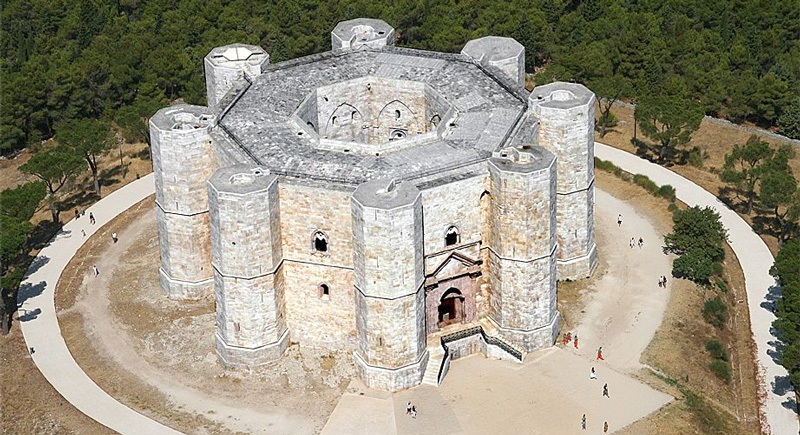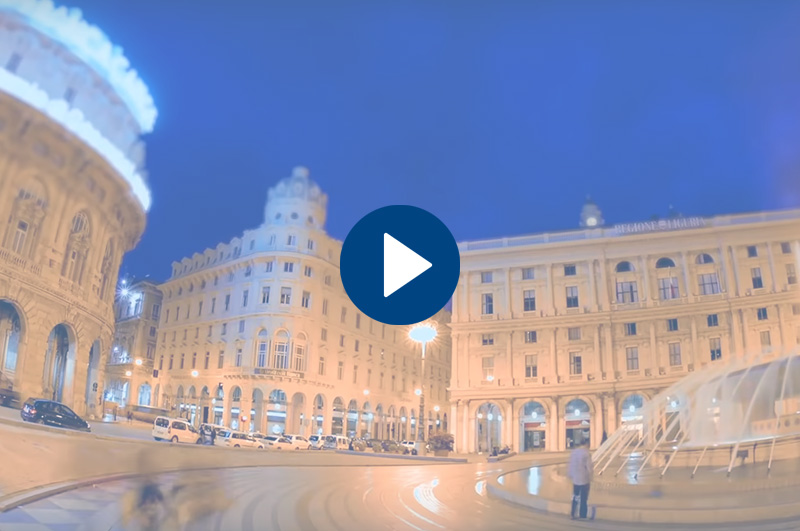8-day TIZIANO PRIVATE TOUR
Naples, Bari, Matera and Alberobello
WHAT'S INCLUDED:
Accommodations in Double Room with Continental Breakfast (*):
- Day 1: 3* to 5* Hotel in Naples city centre
- Days 2 & 3: 3* to 5* Hotel on the Amalfi Coast
- Days 4 & 5: 3* to 5* Hotel in Matera city centre
- Days 6 & 7: 3* to 5* Hotel in Martinafranca area
- Day 8: 3* to 5* Hotel in Bari city centre
(*) The Hotel list is available upon request
Transfers (**):
- Day 2: Transfer to your accommodation on the Amalfi Coast – Stopover in Pompei
- Day 4: Transfer to your accommodation in Matera - Stopover in Paestum
- Day 8: Transfer to your accommodation in Bari - Stopover in Castel del Monte
(**)All transfers by private car (2 pax)/ minivan (3 to 6 pax)/ minibus (7 to 10 pax)
Private Guided Visits / Tours (***) / Activities:
- Day 1: 3-hour private walking tour of Naples city centre with an Authorised Tourist Guide - Half-day excursion to Caserta
- Day 2: 2-hour private guided visit of Pompei Archeological Area with an Authorised Tourist Guide
- Day 3: Full-day excursion of the Amalfi Coast: Positano, Amalfi, Ravello
- Day 4: 1.5-hour private guided visit of Paestum Archeological Area with an Authorised Tourist Guide - Lunch at Buffalo Mozzarella Farm with tasting
- Day 5: 3-hour private walking tour of Matera with an Authorised Tourist Guide
- Day 6: Full-day excursion to Alberobello and Locorotondo – Drop off at your accommodation in Martinafranca area
- Day 7: Full-day excursion to Lecce - 3-hour private walking tour of Lecce city centre with an Authorised Tourist Guide - Visit of a local wine cellar with tastings
- Day 8: 1.5-hour private walking tour of Castel del Monte with an Authorised Tourist Guide
(***)All tours by private car (2 pax)/ minivan (3 to 6 pax)/ minibus (7 to 10 pax)
Admission Tickets to:
- Cappella San Severo in Naples
- Reggia di Caserta
- Pompei Archeological Area
- Paestum Archeological Area
- Church and cave house in Matera Castel del Monte
Full emergency assistance 24 hours/day by our Back Office
List of recommended restaurants and deli shops along the itinerary
All taxes
Options:
- Pick up at Naples Railway / Airport before the start of the tour
- Accommodation in Naples the night before the start of the tour
- Drop off at Bari OR Naples Railway / Airport after the end of the tour
- Other options upon request
DAY 1 - NAPLES & CASERTA
Benvenuti in Italia, welcome to Italy.
Visiting Naples's historic centre means travelling through 20 centuries of history. The design of its streets, piazzas, churches, monuments, public buildings and castles constitute a jewel box of artistic and historical treasures of exceptional importance. Together, they earned their spot on the UNESCO World Heritage List in 1995. Naples is a real treasure of art and history, of indelible signs from past dominations, each of which has contributed to this city's construction.
The city dominates the Gulf of Naples, expanding from the Sorrentine Peninsula to the volcanic area of the Phlegraean Fields. The most famous Neapolitan piazza is Piazza del Plebiscito, displaying the grand colonnade designed by Gioacchino Murat; in front of it is the magnificent Royal Palace designed by Domenico Fontana. Castel Nuovo's different but well-integrated architectural lines, otherwise known as “Maschio Angioino”, evoke the double role of palace and fortress that this building played during the domination of the Anjou and Aragon families.
The churches in this city are countless. Over time, the Cathedral - erected upon pre-existing buildings, has undergone radical modifications to repair the damages caused by the earthquakes, especially on the outside. The interior hosts the famous “Cappella del Tesoro di San Gennaro” (“Chapel of St. Gennaro’s Treasure”), with the two vials containing the Saint's blood.
And last but not least, you will not miss the Sansevero Chapel, commonly called “Pietatella” (Little Pietà). Here you will be astonished by the “Cristo Velato” (Veiled Christ) by Giuseppe Sammartino, a masterpiece striking the eye with the extraordinary craftsmanship employed to sculpt the marble shroud over the body of Christ.
Naples is famous all over the world for its pizza. Yet, there is much more to this unique city’s culinary traditions. You will be pleasantly surprised by the variety and richness of flavours and recipes you’ll discover through our walking food tour. Your Guide will walk you into some of the best food venues in the city, known only to locals. Moving to the heart of the town, with its meandering streets and artisan shops, you will taste authentic mozzarella and try the best street food, such as pizza fritta or frittatina di maccheroni. Of course, we couldn’t do without a delicious bruschetta with Colatura di alici (a special dressing with origins dating back to Roman times). For an overview of Neapolitan cuisine read the article in our BLOG).
The Royal Palace, a symbol of Caserta and a UNESCO World Heritage Site, is one of the most important monuments of the Italian artistic heritage.
Designed in the 18th century by the architect Luigi Vanvitelli, according to the will of Charles III, Duke of Bourbon, the “Reggia di Caserta” is an absolute masterpiece of architecture and decoration, and it houses many works of art. While visiting its interior, looking at the number of stucco works, bas-riliefs, paintings in fresco, sculptures, inlay floors that pass one after another is fantastic. Remarkable are the ones of “Sala di Astrea” (the Astrea Room), “Sala di Marte” (the Mars Room) and “Sala del Trono” (Throne Room), the biggest room within the royal apartments, which was used as a reception room for important personalities.
In the “old” apartment is exposed the Bourbons' crèche, the Family's great passion, and whence the Neapolitan tradition of the Nativity originated.
An integral aspect that shows the majesty and beauty of the Reggia is its wonderful Park, a typical example of an Italian garden: wide lawns, squared flowerbeds and, above all, a triumph of water games (dancing water fountains). Along the central axis, basins, fountains and waterfalls decorated with large sculptural groups pass one after another. The result is a spectacular effect of great impact that peaks with the Grande Cascata (Great Waterfall). Then, the English Garden opens itself up to its beholder's eye - not as symmetrical as its Italian complement - requested by Maria Carolina d'Austria and bursting with indigenous and exotic plants, including the beautiful Cedars of Lebanon.
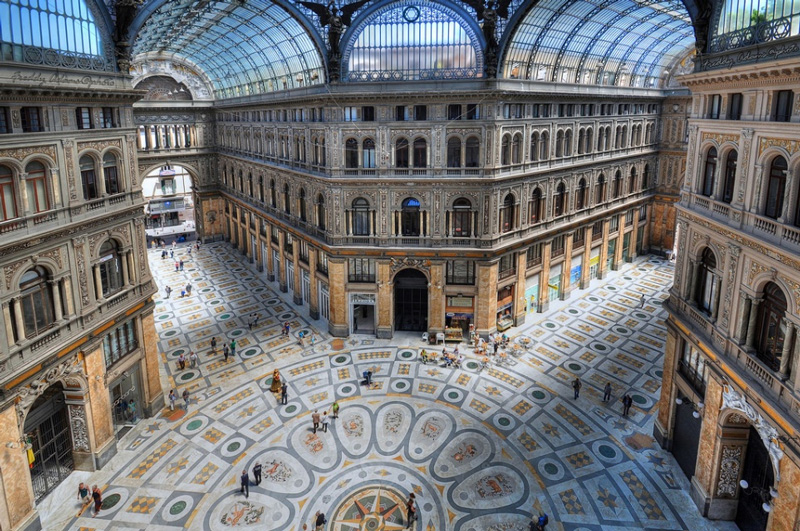
DAY 2 – POMPEI
Pompeii, the Roman city excavated from the ashes of Vesuvius, has been a UNESCO World Heritage Site since 1997!
In 62 AD, the city was partially destroyed by an earthquake. As its reconstruction was still ongoing, on August 24, 79 AD, the eruption of Vesuvius covered the city and its suburban villas with a thick layer of stones, ashes and lapilli (thick, glassy lava). On the other hand, Herculaneum disappeared beneath a flood of volcanic mud.
The ruins of the ancient Roman cities offer an unparalleled window into the quotidian life of classical antiquity. Here you can understand how the Romans of the 1st century AD lived: from brothels and lavatories to posh dining rooms and bathing establishments, including modern spas, health clubs and gyms. The eruption of Mount Vesuvius destroyed the town in 79 AD, and the debris ejected by the volcano covered more than 3,000 people from the volcano.
Due to its healthy climate and pleasant scenery, Pompeii was a holiday resort for wealthy Romans. It is now famous for its civic buildings lining the streets, which are still intact today. The Surgeon’s House, the House of the Faun and the House of Chaste Lovers are exceptional examples of the epoch’s architecture. Another unique building is the House of Mysteries, deriving its name from the murals depicting the Dionysian cult's initiation rites (i.e., the mysteries).
A peculiar characteristic of Pompeii is the florid graffiti covering the walls in just about every building; when the volcanic eruption happened, Pompeii was set to carry out elections in the days ahead – hence the writings and ideograms, which feature both political and sexual content.
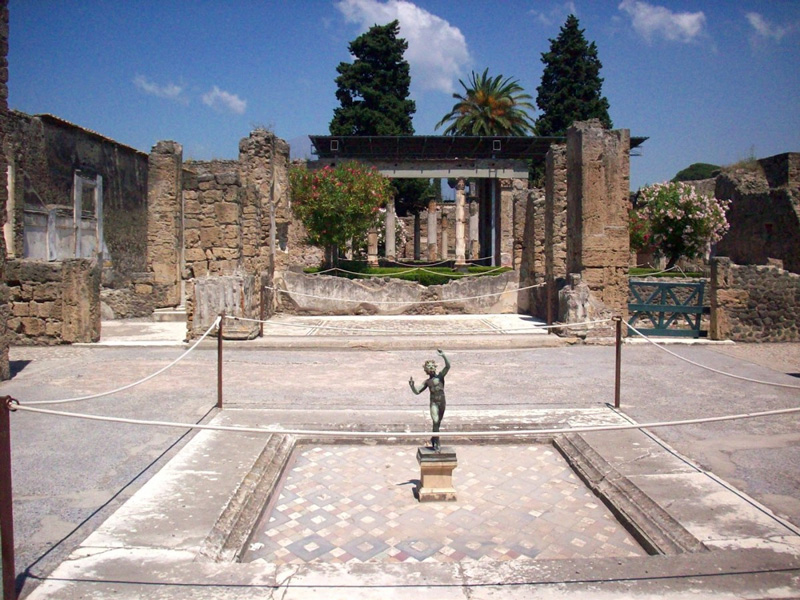
DAY 3 – AMALFI COAST
Welcome to the Amalfi Coast!
Costiera Amalfitana is Italy's most scenic stretch of coastline, a landscape of pastel-coloured villages terraced into hillsides, steep panoramic roads, luxuriant gardens and enchanting vistas over turquoise waters and green mountains.
Considered by UNESCO "an outstanding example of a Mediterranean landscape, with exceptional cultural and natural scenic values," the coast has been a World Heritage Site since 1997. You may go from town to town at the discovery of Amalfi, Positano, and Ravello, three of the most beautiful villages in Southern Italy, world-famous for their charm and colourful architecture.
Amalfi typically has Mediterranean architecture with lanes and characteristic white houses piled one upon the other. In the Middle Ages, it was one of Italy's four powerful maritime republics (with Venice, Pisa, and Genoa). All sea trade in the Mediterranean was once governed by the 12th century “Tavole Amalfitane”, one of the world's oldest maritime codes. A must-see in Amalfi is the Duomo di Sant'Andrea, fronted by an intricately patterned façade, redone in the 19th century. Founded in the 9th century, the Cathedral's subsequent alterations have spared its principal glory, the main portal's 11th-century Byzantine bronze doors. Next to the church lies the Chiostro del Paradiso (1268), or Cloister of Paradise, whose serious Romanesque tone is animated by the Arab elements in its sinuous columns. To escape the bustle of Amalfi, let’s take the famous walk along the “Valle dei Mulini”, a steep-sided valley dotted with ruined watermills – “i mulini” - once used to make paper, an industry for which Amalfi was, and still is, famous.
Positano sits in a splendid panoramic position on one of the most beautiful stretches of coastline. Its enchanting town centre of delightful pastel-coloured houses surrounds the parish church of Santa Maria Assunta; its streets are lined with quaint, colourful shops, and its numerous beaches are world-famous.
Ravello is more elevated than the other pearls of the Amalfi Coast, boasting exceptional views of the coast and its marvellous villas and gardens. French novelist André Gide said they are “closer to the sky than the sea”. Here you may visit Villa Rufolo, built in the 13th century, which hosted popes and kings, and Richard Wagner, who composed part of his opera Parsifal here in 1880. Views from its idyllic gardens are magnificent!
A trip to Cetara is an absolute must. The village is renowned for a particular gourmet speciality, “colatura di acciughe” (anchovy sauce), produced according to an ancient procedure for generations. Spaghetti with colatura di alici is the area's typical recipe, a dish you will remember forever. Discover the secrets of the liquid gold of the Coast in the article in our BLOG.
At dinner, don’t miss Spaghetti with clams in olive oil and garlic sauce, or Seafood Risotto, with a glass of excellent Greco di Tufo white wine.
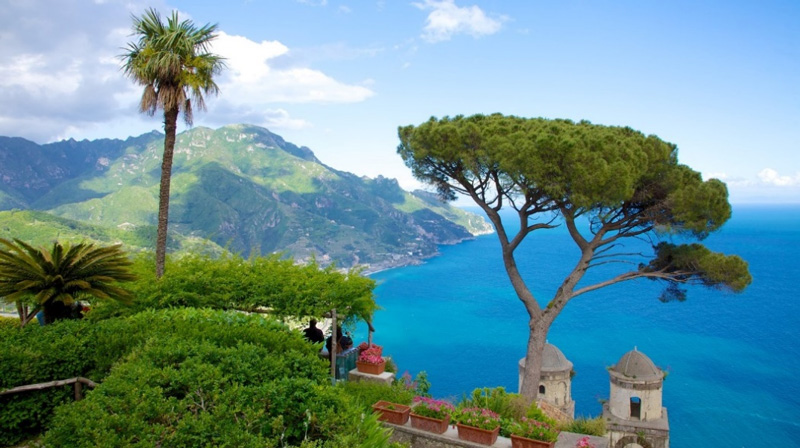
DAY 4 – PAESTUM
Located in the South-East of the Gulf of Salerno, Paestum is an archaeological site of extreme importance, recognised by UNESCO as part of the World Cultural Heritage. Built by the Greeks around the 7th century BC with the name of Poseidon, the city was later occupied by Romans, who made it a thriving colony, giving it its current name.
In addition to its cultural value, the importance of Paestum is linked to the excellent state of conservation of properties, starting from its walls, built by the Greeks and later strengthened by the Romans. Inside them, three majestic temples on a green plain reflect a different light depending on the hours and seasons. Many writers, poets and artists like Goethe, Shelley, Canova and Piranesi were fascinated by this sight, which later inspired them for their works.
These large buildings are a remarkable example of Doric-style architecture. The Temple of Hera, dating to the 6th century BC, is the most ancient building. The Temple of Neptune (5th century BC) is a massive construction made of travertine marble in a warm golden colour that varies at different times of the day. The Temple of Ceres (6th century BC), dedicated to the goddess Athena, was transformed into a church back in medieval times.
Besides its temples, Paestum is famous also for a gourmet speciality that you should taste on site: its “mozzarella di bufala”. Made with the best buffalo milk from the area, “mozzarella di bufala” is closely linked to the land of Campania; the skill it is made reflects the love the cheesemakers put into creating this Italian excellence. We will visit a cheese factory in the area to understand how it is created and taste it freshly made, an unforgettable experience!
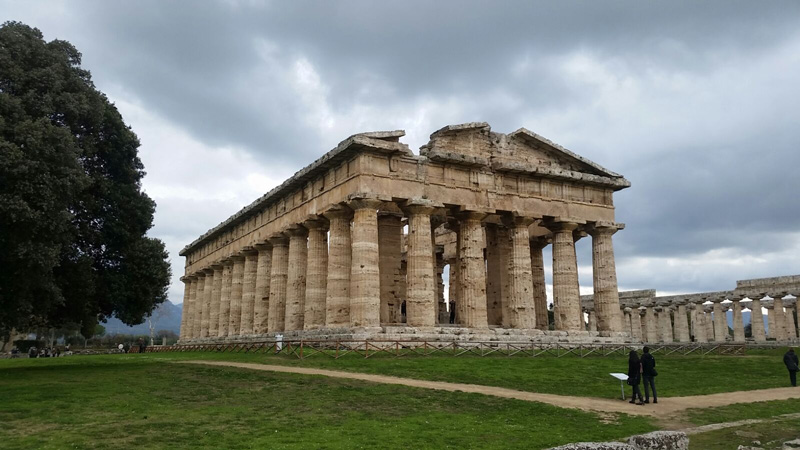
DAY 5 – MATERA
Matera is one of the oldest cities in the world, whose territory holds evidence of human settlements starting from the Paleolithic and without interruption until today. Touring Matera is like experiencing a forgotten past - you feel like setting foot in a nativity scene when you visit this charming city in Lucania. It’s no coincidence it’s referred to as “the second Bethlehem” and was the setting for Mel Gibson’s movie “The Passion” and the last James Bond, “No time to die”.
Matera is widely known as the city of the “Sassi”, the original urban nucleus, developed from the natural caves carved into the rock and subsequently modelled in increasingly complex structures.
In the 1950s, when the inhabitants who lived in the caves dug out of the mountain were forced to abandon those dwellings to settle in modern districts, no one would have ever thought that those grottos - the Sassi - would have become the symbol of a reborn city. UNESCO added the Sassi of Matera to its list of World Heritage Sites in 1993 as a whole and a millennial way of life to be preserved and handed down to our descendants. In fact, it was recognized as a model for living harmoniously with the environment while integrating with it and taking advantage of resources without disturbing the environment.
Geologists call it calcarenite, and ordinary folk refer to it as “tuff”: it’s the rock surrounding Matera that this land’s master artisans learned to work with in ancient times. This brittle, adaptable material is abundant in the mountain that dominates the city, so it seemed only natural for the people from Matera to go up there and dig out that rock to build a home. The extracted material was processed to make the façade of the dwelling. After the first home, others were constructed until the network of houses, tunnels and alleyways became that magical place called Sassi - a gigantic sculpture, a miracle of town planning!
In Matera, you’ll discover one of the most beloved Italian breads. “Pane di Matera" is a bakery product for which only hard wheat semolina and sourdough are used. The characteristics to recognize the bread of Matera are the shapes, croissant or high bread, and a straw-yellow crumb. But besides bread, you’ll not miss other local specialities such as the Caciocavallo cheese or the “Lucanica” sausage.
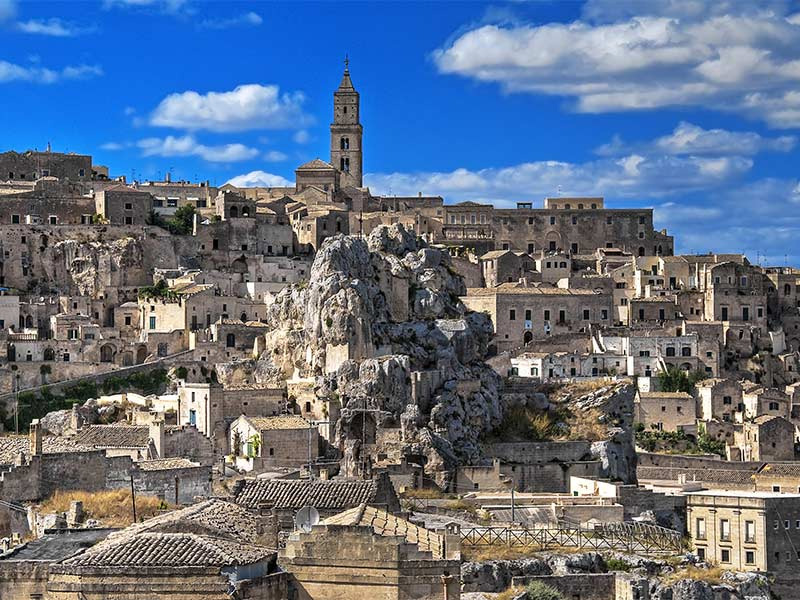
DAY 6 – ALBEROBELLO & MARTINAFRANCA
The Trulli are famous worldwide for their beauty and unique characteristics and represent one of the most extraordinary examples of Italian folk architecture. They were built in a particular historical period when the construction of stable dwellings was highly taxed; the region's inhabitants thus boasted a great capacity to adapt and an exceptional cleverness in coming up with the Trulli, temporary houses built with the local stone. From precariousness to stability - the process of transformation and recovery and the deference to the originality of the work earned the Trulli of Alberobello their recognition as a World Heritage Site.
In Alberobello, the capital of the Trulli, each Trullo has a different shape and size. Unique constructions are sometimes combined in a complex of communicating houses, while others are built on two levels. Most feature a grey cone-shaped roof, ending with a sphere or hemisphere shape. The interior, arranged as a single chamber, comprises niches for a fireplace, bed and furniture. The structure assures excellent indoor climate control: cool in summer and warm in winter!
Martina Franca is a charming baroque town 400 metres above sea level. The era of greatest splendour for this city was undoubtedly the 18th century when the most important monuments and churches still dominating the historic centre were built. Baroque is the predominant style; it can be seen in many buildings, and in this city, it has taken on characteristic connotations that distinguish it from the other variations of this artistic and architectural current; in fact, we speak of “Martinese” Baroque.
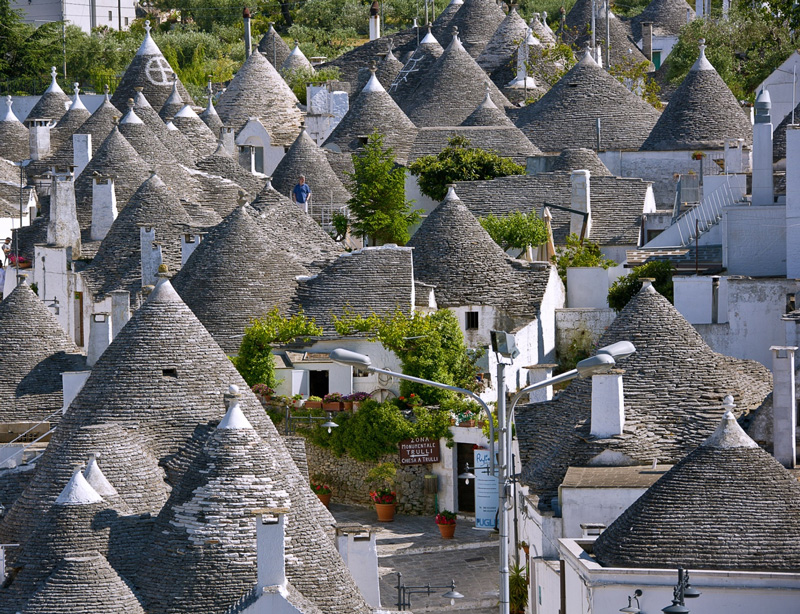
DAY 7 – LECCE
Lying on a plain at the foot of the Salento Plateau is Lecce - the "Florence of the South" - one of the most exciting cities in the region for its architecture, typical of the 17th century.
Of ancient origins, the city experienced two distinct periods of prosperity: the Roman era and the Kingdom of Naples. Under both, the construction of buildings, monuments and mansions increased heavily. These new structures were characterized by magnificent and rich ornamentations that earned this typical architecture the definition of “Leccese Baroque". The imaginative and meticulous sculpting work was facilitated by the fact that the local stone is flexible and easy to inlay. A visit to Lecce can begin with Piazza Duomo, once used as a fortress and today considered the most elegant "salon" in the city. The grandeur of the Duomo, the work of Zimbalo, Cino and Penna, the five-story-tall bell tower, the Palazzo Vescovile (Bishop's Palace), and the Palazzo del Seminario (Seminary) mark the perimeter of the square, one of the monumental works that best represent the magnificence of Lecce’s style.
Not far away, Piazza Sant'Oronzo narrates the city's entire history. The Roman period is visible in the ruins of the Amphitheatre that becomes the exceptional stage for theatrical performances in the summertime, and in part by the high Column - on which stands a bronze of St. Orontius, depicted in the act of blessing - erected in the 17th Century utilizing some of the Roman columns positioned on the Ancient Appian Way. Palazzo del Seggio, known as the "Seat," hosting important art exhibitions, and the Church of Santa Maria delle Grazie, with its interesting frescoes and works sculpted in wood, are the very symbols of the Apulian Renaissance.
Not to be missed is a visit to the Basilica di Santa Croce, where the inspiration of master masonry is visible in every part of the monumental façade that anticipates the beauty of its interior, a harmonious balance between the sobriety of the classical style and the splendour of Lecce's Baroque.
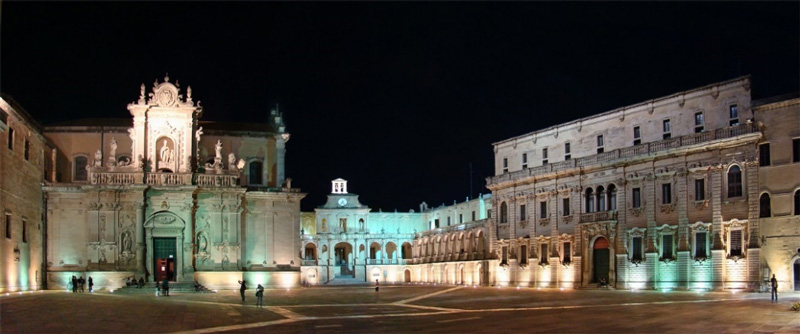
DAY 8 - CASTEL DEL MONTE
Recognized as a World Heritage Site in 1996, Castel del Monte is a brilliant example of medieval architecture located on a hill in the Murge area. Commissioned by the eclectic and cultured Frederick II, Duke of Swabia, Emperor of the Sacred Roman Empire, the Castle is an exceptional work for the perfection of its forms and the fusion of cultural elements from different periods and places. The Lions at the monumental entrance are typical of Romanesque art, while the friezes that decorate some parts of the castle belie Classical inspiration. And the floor's design and materials are partly reminiscent of Islamic art. The number 8 is the principal factor in the castle's plan: 8 sides of the castle, 8 rooms on the ground floor and first floor, arranged to form an octagon, and 8 the massive octagonal towers.
It is still unclear what led Frederick II to build this brilliant piece of architecture. An air of mystery surrounds it and is thus the fount of many legends and the charm of this unique place.
The tour is over, but the memories of a fantastic journey will accompany you for a lifetime!
Arrivederci for another tour with VITOR, Visit Italy on the Road.
